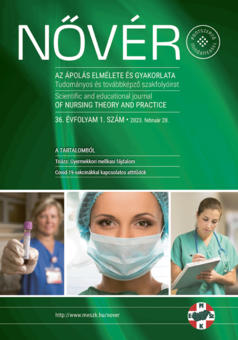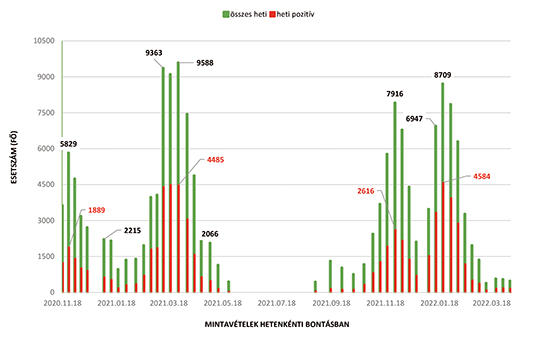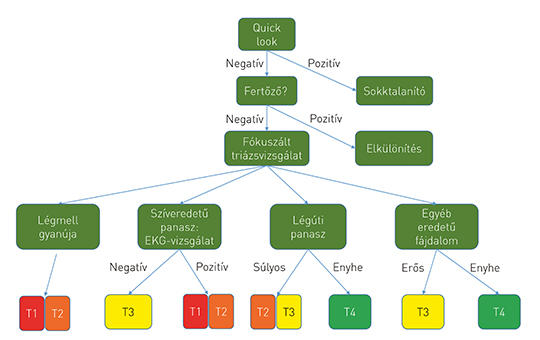The eLitMed.hu medical portal uses computer cookies for convenient operation. Detailed information can be found in the Cookie-policy.
Journal of Nursing Theory and Practice - 2023;36(1)
Content
[Looking back from Intoxicating Vapors to some of the Stages in the Development of Anesthesia Machines ]
[It has been a long and uneven road from simple pain relief devices to today’s modern, computer-controlled anaesthesia and ventilation machines. It was a milestone in the history of anaesthesia when Morton first demonstrated ether anaesthesia in Boston on 16 October 1846. By relieving the pain for short periods of time, it gradually became possible to treat patients surgically, leading to the expansion of surgery. For a long time, inhalation anaesthesia was the only way to relieve pain, but with advances in technology, a new era in surgery and anaesthesia has begun.]
[Attitudes towards Covid-19 Vaccines among Health Care Workers and Laymen ]
[This study aimed to assess the attitudes towards Covid-19 vaccines among health care workers and laymen and to shed light on the similarities and differences between the two groups.
A self-constructed online questionnaire was administered between June and September of 2022. The sampling method was not random, but we relied on the easy to access people. Data were analysed with IBM SPSS 20.6; descriptive statistics, chi-square, Mann-Whitney probes, and Fisher exact tests were applied (p<0.05). There were 1,041 questionnaires included in the final analysis.
There is a vast difference based on vaccination between the two groups; 77.9% of healthcare workers have 3 or more vaccines, while 45.9% of laymen have at least 3. According to health care workers vaccination is the most effective way of defence against Covid-19, although they have experienced more side effects and psychological stress due to vaccination than laymen. Laymen are less trusting they think vaccines are dangerous and have more negative effects. Health care workers get information from experts, while laymen rely on online sources and social media. The majority would accept Western vaccines. Based on the vaccine acceptance defined by the WHO both groups are more repulsive than the populations studied earlier.
The fears and negative attitudes towards Covid-19 vaccines among laymen can be diminished only by health care workers, therefore it is of high importance that they are well informed.]
[Using Mobile Screening Buses as Static Points during the Covid-19 Pandemic ]
[The aim of our study is to present the results of the mobile sampling of the National Public Health Center during the Covid-19 pandemic, the implementation process of the screening buses of the program “We bring the screening tests in place” as static points, as well as the spatial and temporal frequency of use.
Our retrospective analysis was performed in Pest County between 12th of November, 2020 and 18th of April 2022 by evaluating the Covid-19 sampling results from screening buses (N=164,576). Descriptive statistical methods were used to process the data.
In most cases, the screening was carried out in the patient’s car, which reduced the risk of infection and ensured the safety and smoothness of the work by moving quickly through the screening point. Sampling was performed using AbottTM, Clintest® and VivaDiagTM rapid tests, and in case of a negative result, another nasopharyngeal sampling was performed for RT-PCR. An average of 504 samples were taken per day, of which on average almost 1⁄3 (31.41%) were positive.
The advantage of the screening buses was the ability to perform a significant number of tests, their mobility, the fact that they can be placed in easily accessible locations and the reduced risk of infection. Mass testing at static points has proven to be an efficient process that can be used in the future if the need arises.]
[Examination of Pediatric Chest Pain in the Emergency Triage]
[The goal is to optimize and help following the current triage recommendations for less experienced triage nurses in this topic.
The research is based on the documents of pediatric patients experiencing chest pain of 2 adjacent years. The reasearch was made by basic statistical avarages, and non-parametrical, Mann-Whitney u tests and Kruskal-Wallis tests.
The least number (14.5%) of psychogenic pain occured during summer break, while in the other part of the year, this number was almost twice as much (28.7%). The heart rate did not determine the seriousness of the illness: of all 25 children, who should have been categorised by heart rate to T1 according to the Hungarian Emergency Triage System, only 2 was actually in critical condition, while of all patients with banal illnesses, 30% had at least a bit elevated, 10% had seriously/critically elevated heart rate. Blood pressure did not relate to any other data.
It is recommended to pay attention to the time of arrival, and the heart rate, but following strictly the current recommendation could cause problems in the emergency system. Blood pressure is useful, but only if the necessary equipment are available, and if it does not delay necessary therapy.]
1.
Clinical Neuroscience
Is there any difference in mortality rates of atrial fibrillation detected before or after ischemic stroke?2.
Clinical Neuroscience
Neuropathic pain and mood disorders in earthquake survivors with peripheral nerve injuries3.
Journal of Nursing Theory and Practice
[Correlations of Sarcopenia, Frailty, Falls and Social Isolation – A Literature Review in the Light of Swedish Statistics]4.
Clinical Neuroscience
[Comparison of pain intensity measurements among patients with low-back pain]5.
Journal of Nursing Theory and Practice
[Fear of Falling among Geriatric Patients: a Narrative Review]1.
2.
3.
4.
5.






